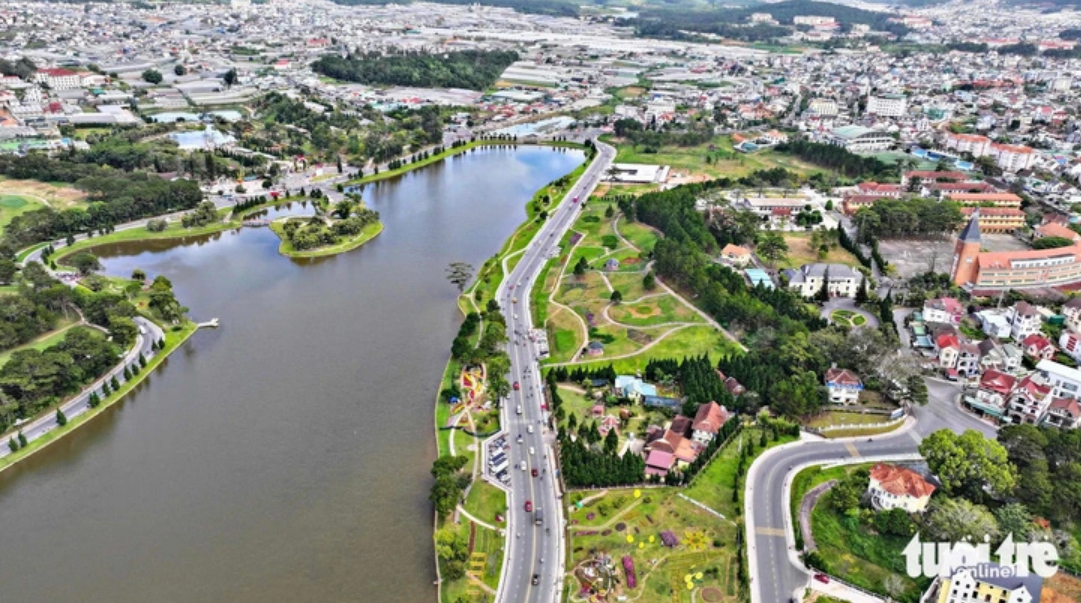The following story is penned by Australian Ray Kuschert, a long-time resident and cycling enthusiast in Ho Chi Minh City, at the request of Tuoi Tre News. The piece offers insights and advice on how to make the metropolis greener and more sustainable.
Transforming Ho Chi Minh City into a ‘green city’ is no overnight endeavor. The world’s leading eco-friendly cities have embarked on this journey decades ago, and now it’s time for Ho Chi Minh City to seize the opportunity and make a significant leap forward in environmental initiatives.
My vision of a Green City involves everyone playing their part in making daily choices that collectively contribute to a greener future. This encompasses everything from the products we purchase to the design of our homes and workplaces.
For instance, if each of the nine million private vehicle owners in the city reduced their weekly driving distance by just 1km, we’d collectively save a remarkable nine million kilometers every week. Considering the average fuel consumption and emissions, this simple act of driving less could substantially reduce carbon dioxide emissions.
So, how can we make this a reality? I believe that Ho Chi Minh City has the potential to emulate leading global cities by embracing bicycles as a primary mode of transportation. The city’s flat and compact layout is ideal for cycling, but the current dominance of cars and motorbikes presents a challenge.
About 15 years ago, the city of Sydney, Australia, faced a similar situation. The implementation of dedicated bicycle lanes sparked initial backlash from drivers, but fast forward to today, and these lanes are a beloved fixture for commuters, students, and workers alike. This infrastructure change not only encouraged more people to cycle but also led to a decrease in car usage, showcasing how demand can be shaped by the right environmental initiatives.
Additionally, public buses and trains in Sydney were modified to accommodate bicycles, offering commuters a seamless combination of cycling and public transport for longer journeys. As a result, Sydney now boasts lower pollution levels than ever before.
Ho Chi Minh City can draw inspiration from these successful initiatives and become a leading green space in Southeast Asia. While there may be short-term inconveniences for motorized vehicle drivers, the long-term benefits include a healthier environment and a shift in commuting habits. I, for one, would gladly cycle to work if safe bicycle paths were available in my district.
The creation of dedicated bicycle-only roads and pathways, integrated with bus and train hubs, is a practical solution to reducing the reliance on motorbikes and cars. This approach would not only decrease carbon emissions but also enhance the efficiency of bus routes as traffic congestion eases.
On a personal note, my Green City starts with small, conscious choices: refusing single-use plastics like coffee cups and straws, opting for fresh market produce over packaged food, buying second-hand items whenever possible, and minimizing food waste. Most importantly, it’s about taking action to reduce my carbon footprint and inspiring others to do the same.
|
|
| Ho Con Rua, or Turtle Lake, is a well-known landmark surrounded by lush greenery in District 3, Ho Chi Minh City. Photo: Ngoc Hien / Tuoi Tre |
ASEAN’s Dynamic Youth: Unlocking the Region’s Future Potential
ASEAN Secretary-General Kao Kim Hourn hosted an interface session titled “ASEAN Youth – ASEAN Future: The Role of Youth in Shaping ASEAN’s Future”. This event was held in Hanoi on the afternoon of April 22nd with the participation of ASEAN youth. The session was part of the inaugural ASEAN Future Forum 2024 initiative.
Vietnam and South Korea Strengthen Collaboration in Global Emissions Reduction Projects
On November 1, Vietnamese Minister of Natural Resources and Environment, Dang Quoc Khanh, engaged in a discussion with the Republic of Korea’s Minister of Environment, Han Whajin. The primary topic of the talks revolved around the possibility of strengthening collaboration in projects aimed at reducing global emissions.








